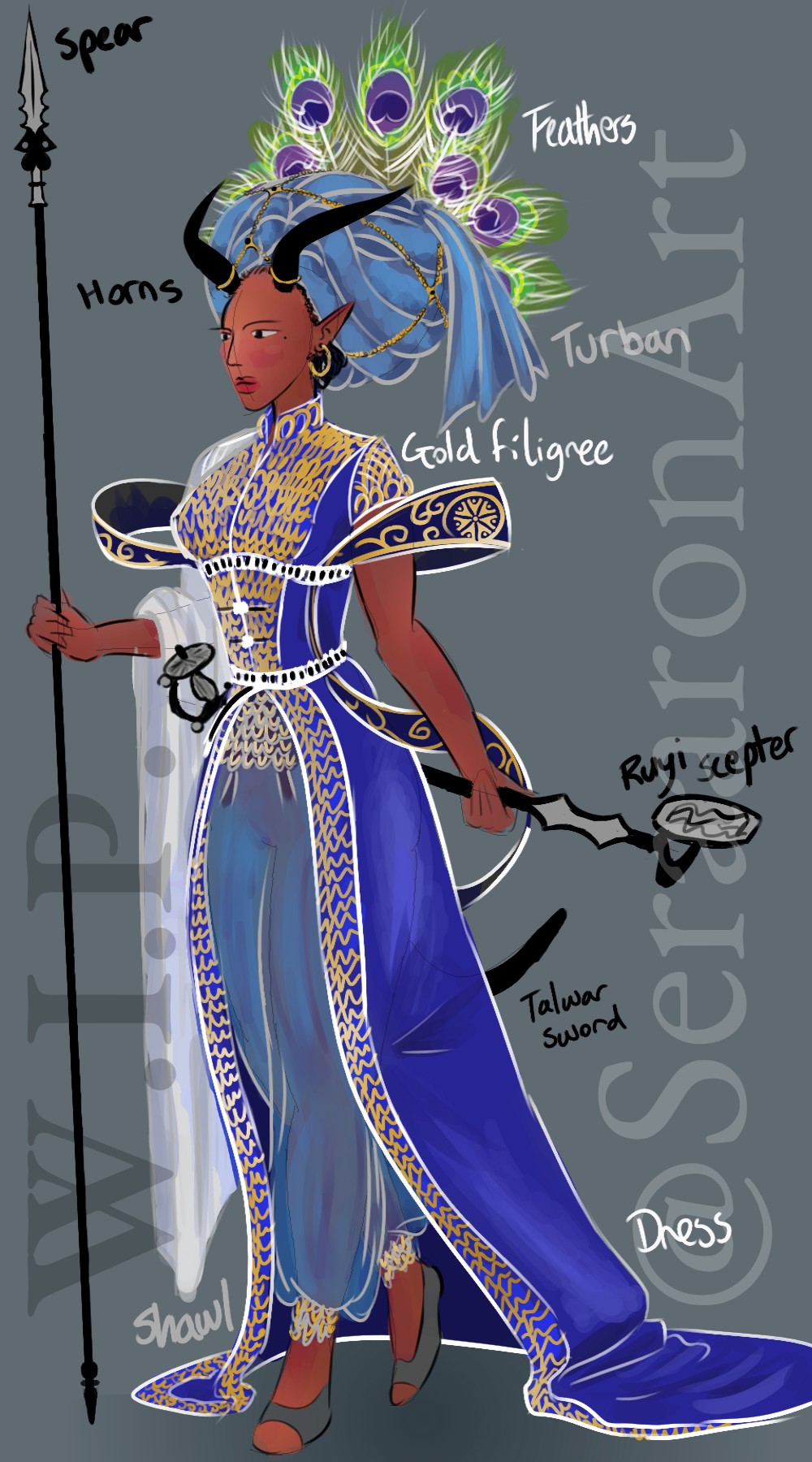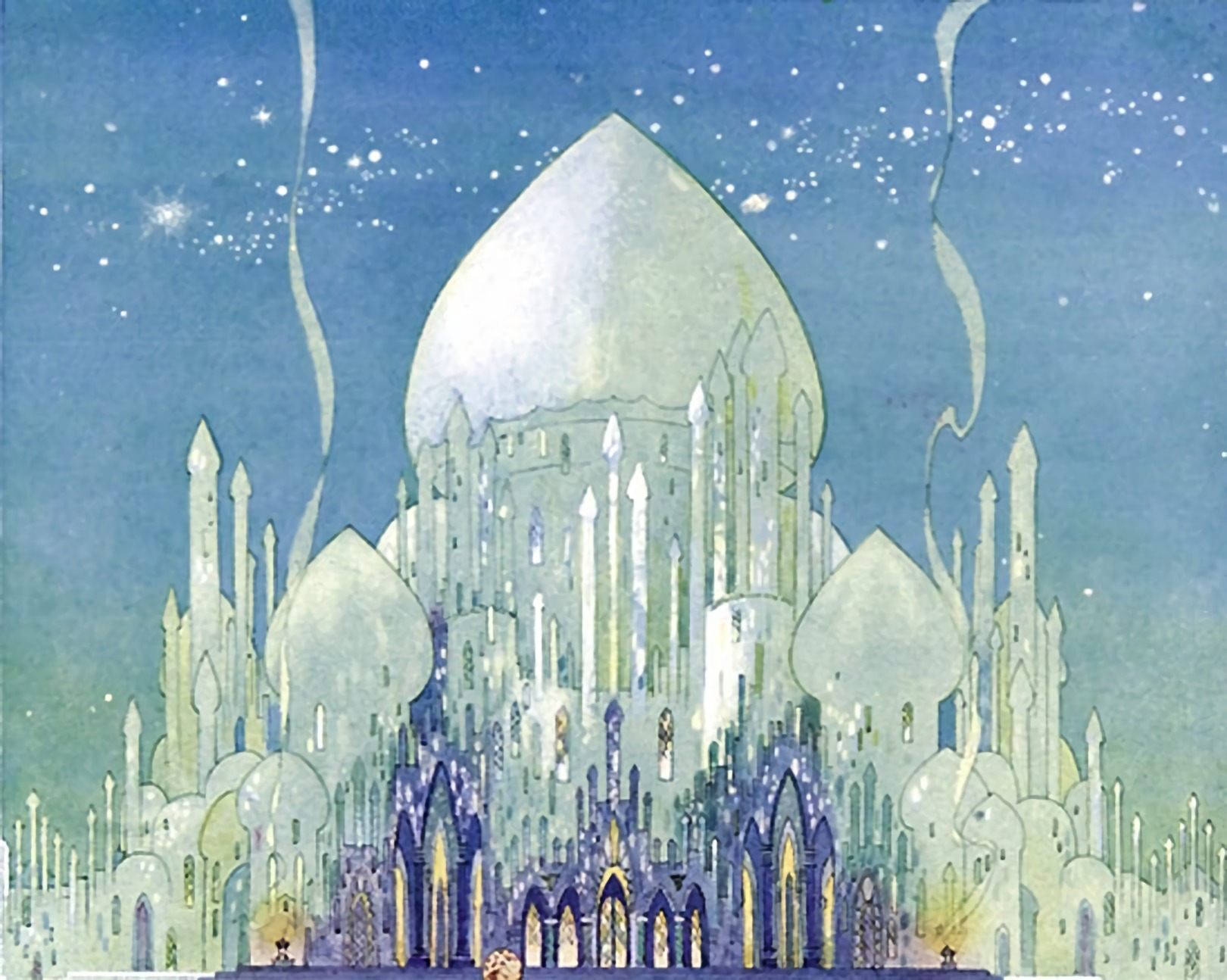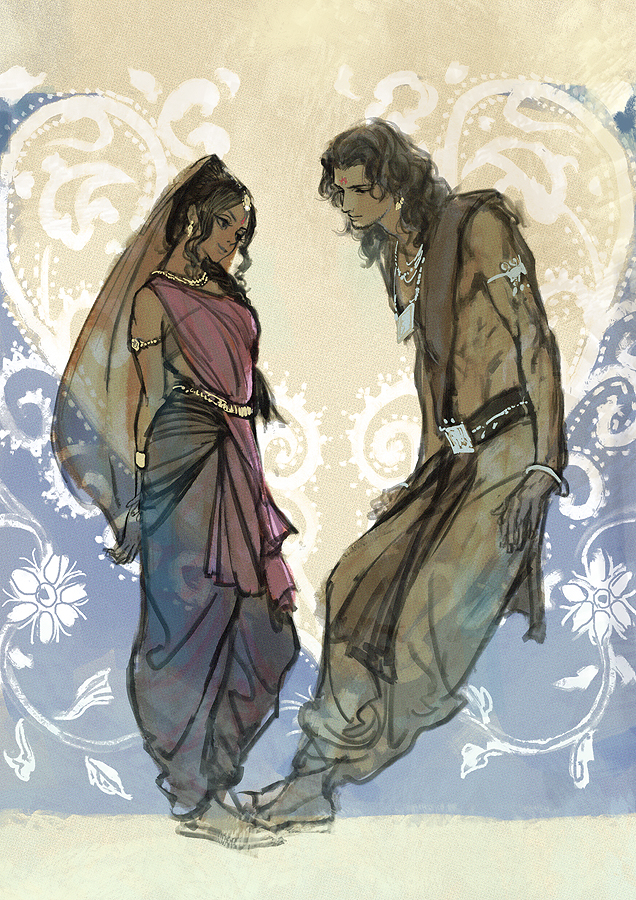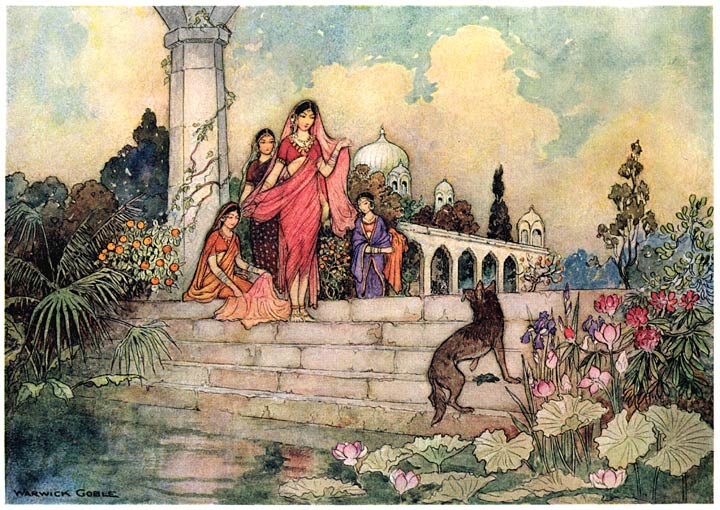The Vritrian Dynasty
Amidst the tens of thousands of names of monarchs that crowd the columns of history, their majesties and graciousnesses and serenities and royal highnesses and the like, the name of Vritri shines, and shines, almost alone, a star.
Example Clans
The names and heraldry of each royal kshatriya family is based on a phylogenetic family (or subfamily) of birds and translated to one the Yoljan Languages, individual households within a family then get their names from a bird genus within that family. For example the Dvohloṣū (phasianidae) Clan might have, the pheasants, the partridges, the peafowl, the turkeys, the tragopan, the junglefowl, and the quails each as separate houses.Structure
A willingness to sacrifice is the essential quality that defines uprightness. A Kshatriya never declines to duel; and always shows bravery, skill, chivalry, and patience in the face of war. A Kshatriya donates their services to the society and protects it's citizens so they can fulfil their Dharma; for that is itself the Dharma of a Kshatriya.Each royal clan–or vaṃśa–has a slightly different internal structure, usually depending on their original kshatriya traditions. Most of them are still feudal, with a single prince or princess of the blood ruling over a province or state in Yoljana. Others form an elected triumvirate, or an oligarchy, or in some rare instances a parliament formed by meritocracy or theocracy. Regardless of how rule themselves, all Nagavanshi are ultimately subservient to Mother Vritri. Despite the changes to the kshatriya class brought about by Vritri's reign, the kshatriya clans and their retainers still see to the material protection and the welfare of the people in general, and the rest of the Yoljan varnas were mostly conserved: Spiritual welfare rests in the hands of the pedanda, who are the celibate class of ascetic priests, poets, teachers, and protectors of sacred learning across the generations, and who's population is kept replenished by certain Yoljan traditions (see below). Then there are the vaishya who fulfil traditional roles in agriculture and animal-husbandry, but who may also be landowners, traders, or money-lenders; and the shudras who are theoretically only meant to be labourers and serfs, but who can in reality end up filling almost any other role in Yoljan society, some of whom have even become distinguished savants and warriors. These other castes have vanṣi too; but they function more simply, like occupational surnames and family units, rather than full organisations in need of their own internal jurisdiction. Though several vanṣi of cotton farmers, weavers, embroiderers, and dyers, may aggregate form a textiles guild—or śreṇi—for example. Such śreṇi need proper approval from the local Kshatriya rulers to be recognised and to gain certain rights and the like, otherwise they are just a group of friendly vanṣi who often do business together.
History
Territories
Religion
Ethics
Marriage & Relationships
After a legitimate non-daivavara marriage (see below), the groom joins the bride's household and social caste and they stay together with her family until they can afford to branch out and raise raise their own family. During this time, the new husband is also expected takes on the role of a guru—teacher or governor—helping to raise some of their family in-law's children (either by taking on apprentices, or by helping out with general education and child-rearing). Or if the marriage was between a mortal and a scion then the mortal takes on the role as guru instead, regardless of gender. In a legitimate non-religious marriage the child always takes on the varna of it's mother, in a daivavara relationship the children are always born pedandas. Children are treated with great respect in Yoljan society, especially the children of the Nagavanshi who all have the potential to become Scions. The parents should raise their children themselves once they move to their own household (at least until their own children start getting married and moving in, and then the cycle continues), so occupational nannies and babysitters are very rare. A married mortal couple is expected to have at least 2 children in their lifetime, whereas an immortal pair are expected to have 2 or more children each century, so long as they can to raise afford them and pay their dowries. Having more children than you can afford to raise is considered a great vice and deemed unfair on the child. Children should be raised under the same, or better, conditions than their parents; this way always leads to self-improvement. If that can't be done then the child should be fostered to an older, richer, couple on either side of the family, or taken to a religious orphanage.Wedding Traditions
Legitimate Rituals
Ilegitimate Rituals
Polyamory and Sexuality
Typically, a person in Yoljana only takes one spouse. But Mahātma Vritri herself is a prime example of a polyandrous woman; famously taking seven legitimate husbands—the dragons themselves—as well as one mortal husband during the 4th century—the so-called 'court hummingbird'—and three royal wives from separate foreign scion kingdoms. She also allegedly had numerous illegitimate paramours and concubines. In a sense, this is a legal loop-hole, but it's recognised and celebrated as the proper way to take multiple partners: Yoljanians receive their dowries from their first legitimate marriage only. Afterwards, they may illegitimately marry anyone they choose. Then they may legitimise that new marriage by re-marrying again, but this time via a kamavivāh. If a man takes two wives for example, though, that doesn't mean that his wives are automatically married to each other as well, though they could be via a separate wedding. All these weddings can get quite expensive, so this is why it's also generally only the kshatriyas who can afford to engage in polyamory. Further to this, sexual conduct out of wedlock and homosexual relationships are not a particularly frowned upon, so long as no children are produced illegitimately. In fact, a homosexual partner is sometimes even preferred as a romantic pursuit because there's no natural chance of offspring. However, because children are so important the the Vritrian dynasty, in the case that a same-sex couple wants to legitimately marry, they either need to already have children with another legitimate partner, or they need to prove they will be capable of producing fertile offspring using magic or other means. Thus, it could even be argued that bisexuality is the assumed norm, at least among the Nagavanshi.Divorcees and Widowhood
Widowed mortals are not expected to re-marry, unless they have no legitimate children or are still relatively young. Being functionally immortal, widowed Scions are expected to remarry within 20 or 30 years. The customary grievance period is until the next Tenebrosity. Both the death of a partner or a divorce means that any contracts made as part of the marriage are reassessed and have to be re-ratified by both families. Divorces in Yoljana are somewhat rare, and only really occur officially if the two families break their contracts and get in a row, or if things start getting abusive or violent between the couple. Divorce was more common in the days before Vritri's reign. The term "sutured couple" is used as an insult to refer to people who are surreptitiously only still together because of their contractual obligations, who no longer love each other (or perhaps never did), but don't want to get divorced. This is another reason why polyamory might occur. Or alternately, if a pair has gained a reputation as a sutured couple, they might have a kamavivāh second-marriage just to shake their reputation and cut the gossip.The Dowry
The second most important reason to get married (and arguably the reason why these complex traditions are so well honoured) is because the bride and groom both receive their dowries on their first legitimate wedding day. That is, their inheritance: Money, heirlooms, land, animals, and other resources. In a world where the noble classes can live for centuries, waiting for the death of a parent to get a share of the dynasty is simply impractical. From this, we see how marriage is seen by the kshatriyas as the final a step into adulthood; whereby one finally starts to take life seriously, so thence takes control of their resources to cultivate and grow into an investment than can be divided into the next generation. There is also no legal concept of a last will and testament: When a parent does die, their resources first go evenly to their spouses, and then to be split among their offspring as a sort of stipend if no spouses remain. We now see then, how the idea of a hereditary position of power (such as the azure throne) is somewhat unheard of; and so this is where a big part of the central tension surrounding Vritri's ascension stems from, having named no successor when granting her children any of their dowries, and since she's not technically dead anyway, and neither are any of her husbands... Everyone is very confused.
0 VA in the Yoljan calendar
(The 'White Jade' Standard)
The Pillars of Society
Between 232 and 268 CE, after the vast majority of the Yoljan continet had come under her rule, the Dynast-Queen commissioned the construction of 60 heptagonal 10-foot marble pillars with a list of major edicts engraved on each face in a different language, which were transported to and erected in major cities and crossroads across the country. In the years that followed, in hundreds other locations the same edicts were put on city walls as plaques or reproduced as steles, and a group of itinerant monks even went around carving them into cave mouths or large roadside boulders. Minor edicts were also distributed to town-centres on stone tablets; and about a century later a book entitled 'One Thousand Correct Edicts: The Pillars of Great Society' containing updated versions of all of the edicts, plus many new ones, was published in several languages and many were placed in public libraries. These edicts formed the first writings in the collective works now called the Vritrishastras. The major edicts, found on the pillars themselves, detailed important information to the common people. They first explain Vritri's origin and give a brief history of the events leading up to her rulership, and then list some of her deeds that the people can be grateful for: One of which is the placement of these very pillars. They go on to explain that she will use her power to try to make life better for her people, and that that task will be made easier if the people themselves know how to best live their lives. The content of the pillars then turns to a religious context, appealing to a freedom of expression by way of the puruṣārthas—objects of human pursuit.Thus the glory of Dharma will increase throughout the world, and it will be endorsed in the form of mercy, charity, truthfulness, purity, gentleness, and virtue.Because of her own religious background, two of the major edicts speak highly of the dragons and give advice on how one can emulate them if one so chooses. And one of the edicts speaks of animism—the attribution of a living soul to all things—and how one can show proper respect for all things, especially animals and other people. This edict is expounded upon in greater detail by the minor edicts and in Vritri's later writings; describing how all reptiles, including birds, are especially sacred—since they are direct creations of the Cosmic Mothers Herself—and so none should be killed or sacrificed.
Those cows, ewes, and sows which are either with young or in milk, are inviolable, and also those of their young ones which are less than six months old. Cocks must not be caponed (de-spurred and castrated). Indeed, no living being should ever be neutered or otherwise mutilated. Husks containing living animals must not be burnt. And forests must not be burnt either uselessly or in order to destroy living beings.The major edicts also express a concern for fairness in the exercise of justice, caution and tolerance in the application of sentences, and the advocation of proper pardoning for those who obtain freedom via the proper channels. They also speak of morality, proper ethics, and instructions on how to conduct a fair trial if no-one of a higher authority is able to be present.
But it is desirable that there should be uniformity in judicial procedure and punishment. This is my instruction from now on. Men who are imprisoned or sentenced to death are to be given three days respite. Thus their relations may plead for their lives, or, if there is no one to plead for them, they may make donations or undertake a fast for a better rebirth in the next life. For it is my wish that they should gain the next world.According to the edicts, Vritri promised to take great care of the welfare of her subjects (human and animal), and those beyond her borders as well, spreading the use of medicinal treatments, improving roadside facilities for more comfortable travel, and establishing "officers of the faith" throughout the territories to survey the welfare of the population and the propagation of Dharma and good living. The king 'Yona' (of the faun-like deer people whose ancestral home is now the Yonavana forest near the central highlands of the continent and who worship their progenitor god Atala) is named as a recipient of Vritri's generosity, together with the triumvirate of Agartha (the Oreades known as 'Prajapathia', 'Veruna', and 'Yamdev') who make their home beneath the land on which the Yoljanians make theirs. Lastly, the major edicts issue a full pardon to anyone who still bears a grudge against her while she conquered their land, saying that they are no longer enemies and so all is forgiven. Then they offer to eventually repay three-fold to cost to any peasant family whose land she requisitioned for her army's use during her campaign. The final edict issues a formal apology to the families of the souls of those she was forced to slay in pursuit of her own Dharma, especially those atrocities committed in the highlands; she expressed regret for having done what she did and hopes that they will fin it in themselves to forgive her in their next life once they see what great good she has brought to the land since.
The Declaration of Distances
The pillars themselves also became a symbol of Vritri beginning to keep her promises and bring peace, because the pillars themselves were also each tool for the Yoljan people. First, because they were written in seven languages, they were used to be able to translate and communicate with people on the other side of the known world. And secondly, as an inscription near the bottom of each 121-inch pillar explained:The stone of this pillar was commissioned to be exactly one 'imperial ashoka' in height, and exactly one-tenth of that height for the width of each face. Know that one-thirtieth of an ashoka, shall hereby be equivalent to a 'hasta' (hand), and so the face of this prism is one 'pada' (foot) in width. Know too that an ashoka is exactly one one-thousandth of an 'imperial kosh', and to four kosh make a 'yojan'. Finally know that all of this land which I now know as my dominion is defined to be three-hundred-and-sixty yojana in width between it's end-most points.The inscription then goes on to explain that a yojan is the optimal distance a man should have to walk in a day, giving a bespoke example based on the distances between the local towns so that a common person can learn to judge distances for themselves; so this implicitly explains why the previously mentioned 'improved roadside facilities' will be spaced approximately one yojan apart. This inscription basically standardised the imperial measurements that the entire continent now uses; and by giving distances in yojana, a man can know roughly how many days he will have to travel in order to trade with other towns.
Remove these ads. Join the Worldbuilders Guild



















This is a great article. It's very dense and so thorough (I'm a fan) and I love me some subcontinental fantasy! (Also cool to see someone else taking inspiration from the Mongols :D) I’m curious to know a bit more about the internal structure of the dynasty/Vritri’s line. There are lots of terms and names for roles within the dynasty (scion, naga kings, clans) and I was wondering what the relationship between them all is? (Sorry, big question!)